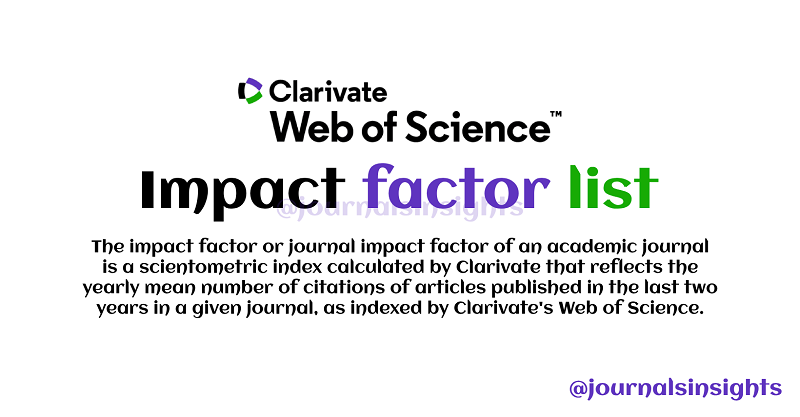Nature Biotechnology Impact Factor, Quartile, Indexing, Ranking

Nature Biotechnology (NB) is a scholarly journal dedicated to publishing research in the field of Immunology and Microbiology, and Published by Nature Publishing. The Print-ISSN of Nature Biotechnology is 1087-0156 and its abbreviation is Nat Biotechnol.
The latest Impact Factor of the Nature Biotechnology for 2025-2026 is 68.164.The Publicaiton fees (APC) is €9,750 / $11,690 / £8,490.
Nature Biotechnology Aim and Scope
Nature Biotechnology is a monthly journal covering the science and business of biotechnology. It publishes new concepts in technology/methodology of relevance to the biological, biomedical, agricultural and environmental sciences as well as covers the commercial, political, ethical, legal, and societal aspects of this research. The first function is fulfilled by the peer-reviewed research section, the second by the expository efforts in the front of the journal. We provide researchers with news about business; we provide the business community with news about research developments.
The core areas in which we are actively seeking research papers include: molecular engineering of nucleic acids and proteins; molecular therapy (therapeutics genes, antisense, siRNAs, aptamers, DNAzymes, ribozymes, peptides, proteins); large-scale biology (genomics, functional genomics, proteomics, structural genomics, metabolomics, etc.); computational biology (algorithms and modeling), regenerative medicine (stem cells, tissue engineering, biomaterials); imaging technology; analytical biotechnology (sensors/detectors for analytes/macromolecules), applied immunology (antibody engineering, xenotransplantation, T-cell therapies); food and agricultural biotechnology; and environmental biotechnology. A comprehensive list of areas of interest is shown below.
Genetic engineering
- Strategies for controlling gene expression
- Strategies for manipulating gene structure
- Strategies for gene containment
Large-scale approaches
- Technologies for analyzing gene function (e.g., arrays, SAGE)
- Technologies for analyzing gene structure/organization (e.g., molecular beacons)
- Chemogenomics or chemical genetics
- Pharmacogenomics/SNPs
- Computational analysis
Proteomics
- Technologies for analyzing/identifying protein structure/function (e.g., 2-D gels, mass spectrometry, yeast two-hybrid, SPR, NMR, arrays and chips)
- Structural genomics
- Computational analysis
Metabolomics
- Technologies for analyzing/profiling metabolites (chromatography, mass spectrometry)
- Computational analysis
Computational biology
- Bioinformatics; algorithms; data deconvolution
- Modeling and systems biology: kinetics-based models and constraints-based models
Molecular engineering
- Rational approaches for proteins/antibodies/enzymes/drugs
- Molecular evolution
- Molecular breeding approaches
Metabolic engineering
- Genetic manipulation of species of interest to modify or allow the production of a commercially or therapeutically relevant compound
- Computational analysis
Novel expression systems
- Mammalian cells
- Insect cells
- Bacteria
- Fungi
- Plant cells
Delivery of genes, drugs, or cells
- Targeting strategies
- Viral and nonviral vector strategies
Imaging
- Reporter molecules
- Imaging approaches/technologies for visualizing whole animals, cells, or single molecules
- Computational analysis
Nucleic acid therapeutics
- Gene therapy (targeting, expression, integration, immunogenicity)
- Antisense
- RNAi
- DNAzymes and ribozymes
- Other (e.g., chimeric oligonucleotides/triple helix)
Nanobiotechnology
- Nanomaterials for use in drug delivery or as therapeutics
- Nanomaterials for use in industrial biotechnology
- Nanosensors
- Nanosystems for imaging molecules and cells
Vaccines and applied immunology
- Antibody engineering
- T-cell therapies
- Therapies exploiting innate immunity (e.g. complement)
- Antigen delivery vectors and approaches
- Nucleic acid vaccines
- Computational analysis
Regenerative medicine
- Stem cells
- Tissue engineering
- Therapeutic cloning (somatic cell nuclear transfer)
- Xenotransplantation
- Biomaterials
Biosensors
- Approaches for detecting biological molecules
- Use of biological systems in detecting analytes
Assay systems
- Approaches for multiplexing and increasing throughput
- Selection/screening strategies for gene/proteins/drugs
- Microfluidics
Biomaterials
- Engineering materials for biological application
- Molecular imprinting
- Biomimetics
- Nanotechnology
Agbiotech and transgenic plants
- Crop improvement (resistance to stress, disease, pests)
- Nutraceuticals
- Forest biotechnology
- Plant vaccines
- Plants as bioreactors
- Gene-containment strategies
Pharming
- Transgenic animals
- Knockouts
- Reproductive cloning
- Biopharmaceutical and enzyme production
- Transgene targeting and expression strategies
Environmental
- Bioremediation
- Biomining
- Phytoremediation
- Monitoring
Nature Biotechnology Details
| Journal title | Nature Biotechnology (NB) |
| Abbreviation | Nat Biotechnol |
| Print ISSN | 1087-0156 |
| Online ISSN | 1546-1696 |
| Publisher Name | Nature Publishing |
| Editor-in-chief | Barbara Cheifet |
| Subject Category | Immunology and Microbiology |
| Status | 🟢 Active |
Nature Biotechnology Metrics and Rankings
In the context of academic journals, "Metrics and Rankings" refer to various measures and evaluations used to assess the quality, influence, and impact of a journal.
Below are the metrics and rankings for the journal Nature Biotechnology
| Impact Factor | 68.164 |
| SJR | 22.781 |
| Ranking | 18 |
| CiteScore | 71.9 |
| H-Index | 491 |
Nature Biotechnology Article Processing Charge (APC)
| Article Publication Charges (APC) |
€9,750 / $11,690 / £8,490 ✳️Without APC Immunology and Microbiology Journals |
Nature Biotechnology Abstracting and Indexing
Abstracting and Indexing (A&I) refers to the processes that help organize and categorize academic journals, making them easier to find and access for researchers and scholars
| Abstracting and Indexing |
Nature Biotechnology Submission
If you would like to submit a manuscript or visit the journal's website, please click on the link below.
| Journal Submission | 🔗 Journal Website |
Advertisement
Immunology and Microbiology Journals List
- Annals of Microbiology Immunology and Microbiology Impact Factor, Indexing, Ranking
- Acta Microbiologica Bulgarica Immunology and Microbiology Impact Factor, Indexing, Ranking
- Environmental Microbiomes Immunology and Microbiology Impact Factor, Indexing, Ranking
- Antibody Therapeutics Immunology and Microbiology Impact Factor, Indexing, Ranking
- Metabolic Engineering Immunology and Microbiology Impact Factor, Indexing, Ranking
- EcoSal Plus Immunology and Microbiology Impact Factor, Indexing, Ranking
- npj Biofilms and Microbiomes Immunology and Microbiology Impact Factor, Indexing, Ranking
- mBio Immunology and Microbiology Impact Factor, Indexing, Ranking
- Virus Evolution Immunology and Microbiology Impact Factor, Indexing, Ranking
- PLoS Pathogens Immunology and Microbiology Impact Factor, Indexing, Ranking

